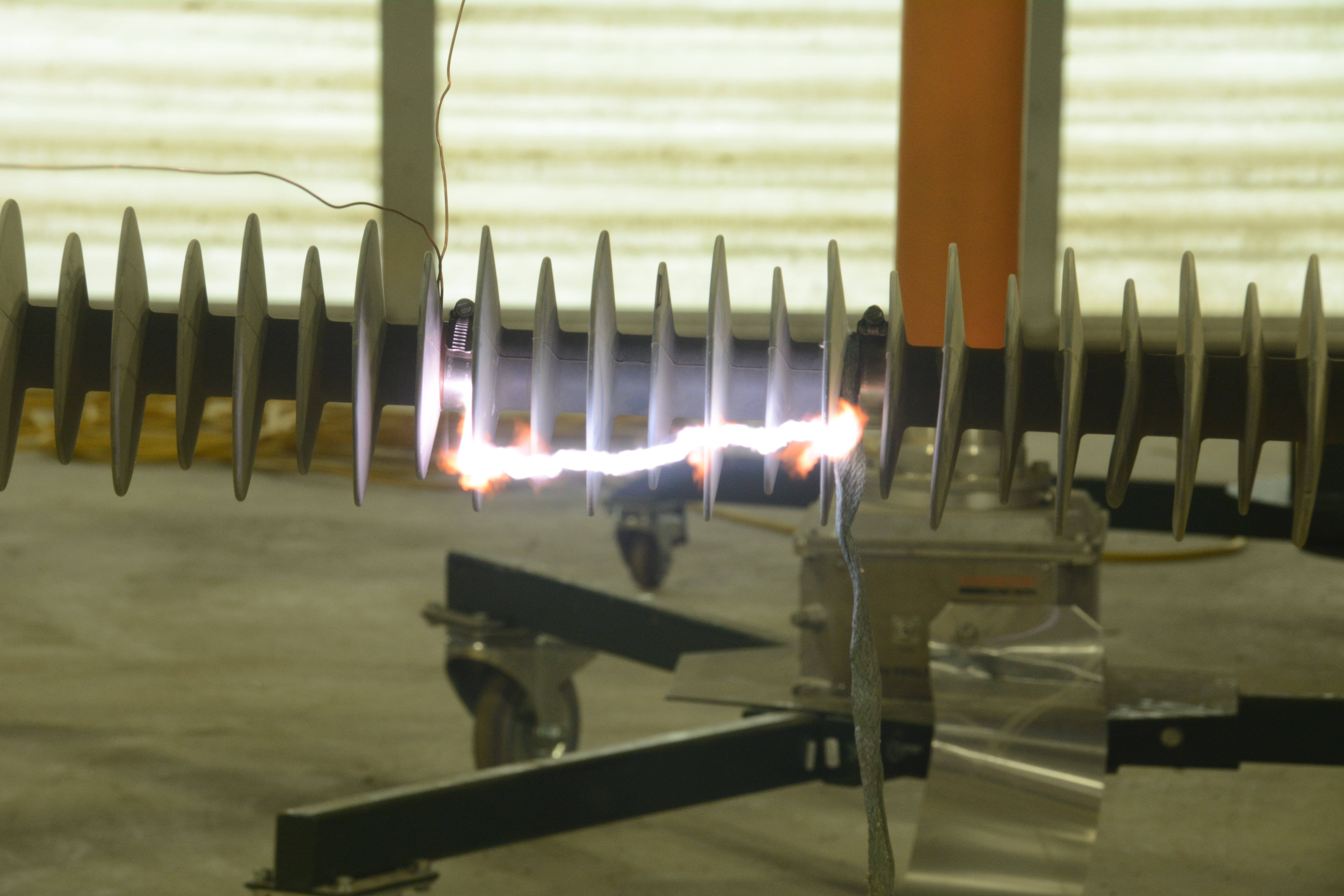P35.011: Polymer and Composite Overhead Transmission Line Insulators
Objective
Polymer and composite insulators provide a lightweight and enhanced contamination performance alternative to traditional porcelain and glass insulators. While manufacturers have addressed many early design challenges, utilities must still understand how to select, apply, and inspect these components to ensure their expected design life. By comprehending their long-term performance, developing design guidelines, and refining acceptance criteria, utilities can confidently specify and apply polymer insulators. This enables them to create designs and select components that meet long-term performance objectives.
This project focuses on the specification, application, inspection, and in-service performance of polymer insulators through both long-term and short-term research tasks, including:
- Identify aging and degradation mechanisms of new and existing designs
- Improve modeling of electrical stress levels
- Educate utilities on the most recent insulator developments, test methods, and lessons learned from the field
Research Value
The project can offer several benefits including:
- Provide technical information to develop more effective specifications and enhance the long-term performance of composite components
- Reduce construction costs and improve performance through proper handling and application of composite components
- Extend the life of polymer insulators, thereby reducing the occurrence of sustained outages and maintaining a reliable electricity supply to the public
- Enhance technical knowledge and productivity by offering better information and tools
Approach
This project addresses a range of polymer insulator concerns through both short-term and long-term research tasks and develops various technical knowledge transfer tools to assist utilities in selecting, applying, and inspecting polymer insulators. In 2026, key activities include:

Perform Multi-Stress Aging Tests: For over two decades, EPRI’s multi-stress aging chamber has provided utilities with timely information about the performance of polymer insulators, significantly reducing the time needed compared to in-service experience alone. The chamber remains a valuable asset, and as some components are removed for evaluation, EPRI plans to add new designs that reflect industry trends.

Perform Small-Scale Degradation Tests: EPRI has developed several small-scale degradation tests that are repeatable, reproducible, and relevant for assessing an insulator’s performance under specific in-service conditions. EPRI intends to continue monitoring the aging of samples, refine the test methodology, and report on the findings.

Update E-Field Modeling Software: Recognizing the critical role of electric fields in the service life of polymer insulators, this software calculates the electric field on new or existing insulator designs, helping utilities determine the need for corona rings. EPRI works with user feedback to keep this tool user-friendly and relevant.

Refine Polymer Insulator Impulse Testing Methodology: This task intends to refine the method of performing steep impulse testing on polymer insulators.

Update the Insulator Reference Book (The Violet Book): This comprehensive guide provides state-of-the-art information on insulator selection, inspection, and maintenance. Revisions to the book aim to include the numerous mechanical considerations when selecting insulators for different configurations.

Update the ADSS Application: This web-based tool helps users understand the electric field influence of high-voltage transmission lines on all-dielectric self-supporting (ADSS) installations. EPRI continues to improve user accessibility.

Develop Handling Test Methodology: These tests supplement performance tests by identifying polymer insulators that resist handling damage while meeting in-service performance needs. EPRI is developing a test protocol based on several years of test development.

Develop Nondestructive Weathershed Bonding Assessment Method: This task evaluates the use of ultrasound technology and nondestructive stress application to detect poor weathershed bonding in polymer insulators. EPRI aims to expand the dataset across multiple makes and designs to verify the test method.

Provide Tools and Resources on the Transmission Resource Center: The following calculators, tools, result summaries, and references are planned to be available on the Polymer Insulator Transmission Resource Center:
| Resource Title | Resource Type |
|---|---|
| All-Dielectric Self-Supporting (ADSS) Application | Calculator |
| Lessons Learned from Polymer Insulator Failures | Result Summary |
| Comparing Insulator Resistance to Physical Impacts | Result Summary |
| Aging Chamber Report | Result Summary |
| Insulator Reference Book (TheViolet Book) | Reference |
| Polymer Insulator VintageGuide | Reference |
Anticipated Deliverables
| Deliverable | Type |
|---|---|
| Insulator Reference Book (TheViolet Book) | Reference Book |
| Insulator E-field Modeling Software (Insulator Calculation Engine [ICE]) | Software |
| Nondestructive Evaluation of Weathershed Bonding | Technical Update |
Past EPRI Work on Topic
| Product ID | Title | Description | Published Date |
|---|---|---|---|
| 3002029594 | Analysis of Polymer Insulator Failures: A Study of Flashunders | This report shows how tracking and trending flashunder failures helped identify the root of theissue and provides recommendations for addressing existing populations. | 2024 |
| 3002027063 | Tests to Determine Polymer Insulator Resistance to Handling Damage | This report summarizes EPRI efforts to develop tests that evaluate the durability of polymer insulators from damage typically caused during handling. | 2023 |
| 3002024447 | Current Development on Non-destructive Weathershed Bonding Assessment | EPRI is developing a method to identify polymer insulators with weak bonding between the weathershed and the core using ultrasound scanning. | 2022 |
| 3002021553 | Feasibility Study of Using Steep Front Impulse Tests on Aged Populations | Describes efforts to assess field aged insulators suspected of internal defects using steep front impulse testing. | 2021 |